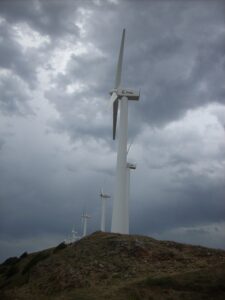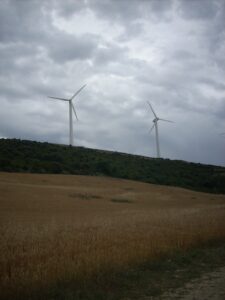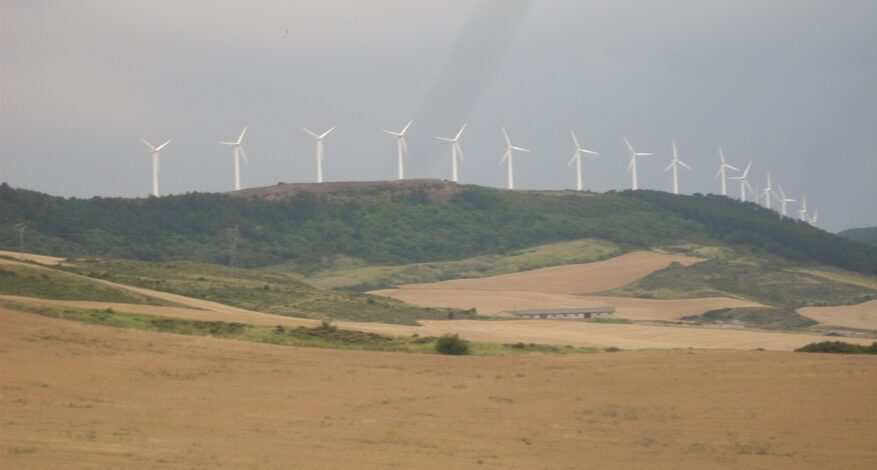THE IMPORTANCE OF WIND POWER
Wind power or wind energy is the use of wind to provide mechanical power through wind turbines to turn electric generators and traditionally to do other work, like milling or pumping.
There are different sources of renewable energy that we can use to satisfy our needs, and the wind is one of the most important sources at our disposal. Wind power is clean energy that does not create waste or pollution during its production.
 The exploitation of the wind reduces the output of CO2 and other pollutants that are released into the atmosphere through the usage of fossil sources. It also avoids that tens of millions of oil barrels burn, giving a huge help in the fight against climate change.
The exploitation of the wind reduces the output of CO2 and other pollutants that are released into the atmosphere through the usage of fossil sources. It also avoids that tens of millions of oil barrels burn, giving a huge help in the fight against climate change.
So, the environmental impact of wind power is relatively minor compared to that of fossil fuels. According to the IPCC, in assessments of the life-cycle greenhouse-gas emissions of energy sources, wind turbines have a median value of 12 and 11 (gCO2eq/kWh) for offshore and onshore turbines, respectively. Compared with other low carbon power sources, wind turbines have some of the lowest global warming potentials per unit of electrical energy generated.
Wind farms
 Wind farms consist of many individual wind turbines, which are connected to the electric power transmission network. Onshore wind is an inexpensive source of electric power, competitive with or in many places cheaper than coal or gas plants.
Wind farms consist of many individual wind turbines, which are connected to the electric power transmission network. Onshore wind is an inexpensive source of electric power, competitive with or in many places cheaper than coal or gas plants.
Onshore wind farms also have an impact on the landscape, as typically they need to be spread over more land than other power stations and need to be built in wild and rural areas, which can lead to “industrialization of the countryside” and habitat loss.
Offshore wind power or offshore wind energy is the use of wind farms constructed in bodies of water, usually in the ocean, to harvest wind energy to generate electricity. Higher wind speeds are available offshore compared to on land, so offshore wind power’s electricity generation is higher per amount of capacity installed. In addition, Offshore farms have less visual impact, but construction and maintenance costs are higher.
EU and Italy
In 2015 there were over 200,000 wind turbines operating, with a total nameplate capacity of 432 gigawatts (GW) worldwide. Wind power constituted 15.6% of all installed power generation capacity in the European Union and it generated around 11.4% of its power.
According to data collected by the Associazione Nazionale Energia del Vento, in 2019 Italy has produced 20.06 Terawatt-hour (TWh) from wind, which is equivalent to the annual requirement of about 7 million families. According to these results, the International Energy Agency thinks that in a few years wind power will be the first electric source in Europe with Italy in the lead.
In addition, offshore wind will grow in an exponential way over the next two decades, globally the capacity of those parks could become 15 times bigger.
Economic sphere
The production and distribution of electrical energy from renewable sources has been growing for a long time. The change is also impregnated with economic factors. We need a market that invites players to invest in renewable sources.
 For example, the wind industry in the United States generates tens of thousands of jobs and billions of dollars of economic activity. Wind projects provide local taxes, or payments in place of taxes and strengthen the economy of rural communities by providing income to farmers with wind turbines on their land.
For example, the wind industry in the United States generates tens of thousands of jobs and billions of dollars of economic activity. Wind projects provide local taxes, or payments in place of taxes and strengthen the economy of rural communities by providing income to farmers with wind turbines on their land.
Wind energy in many jurisdictions receives financial or other support to encourage its development. Wind energy benefits from subsidies in many jurisdictions, either to increase its attractiveness or to compensate for subsidies received by other forms of production which have significant negative externalities.

